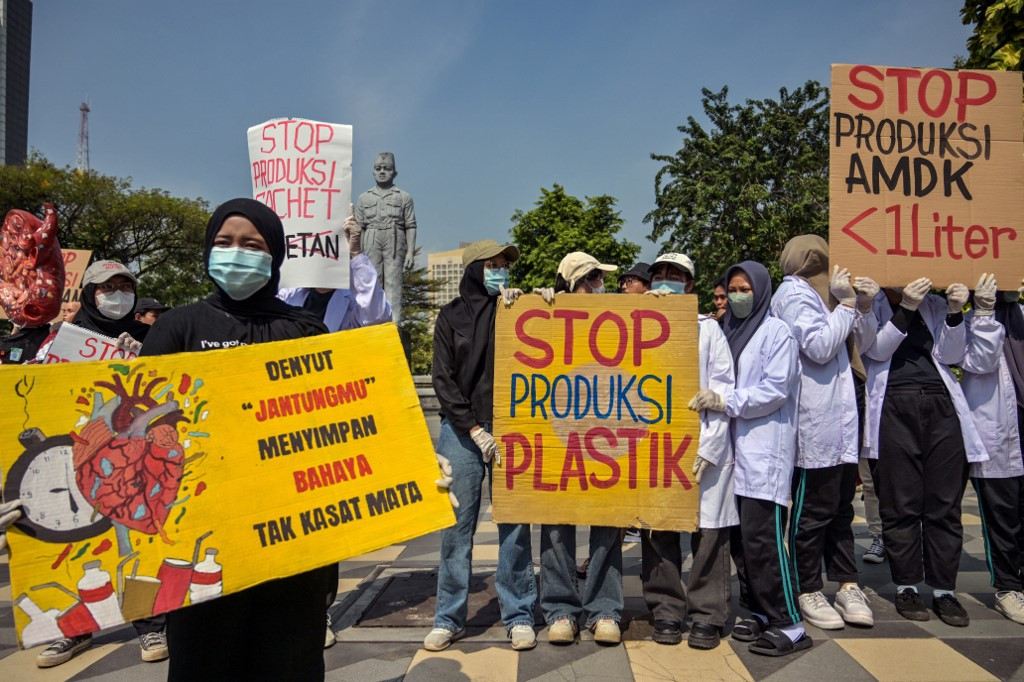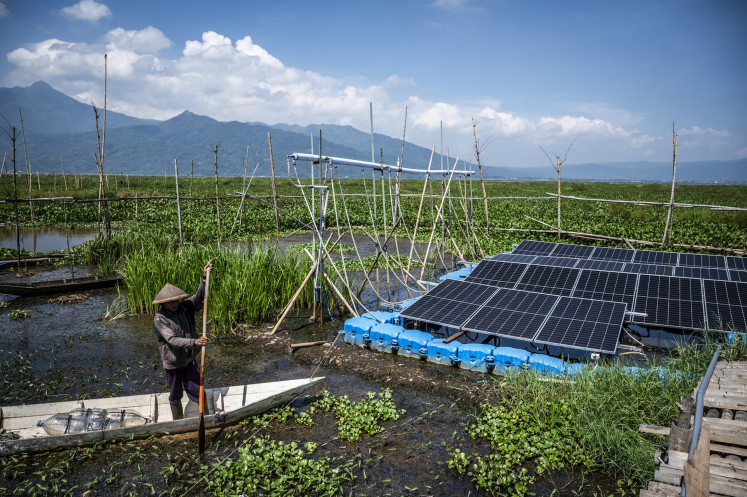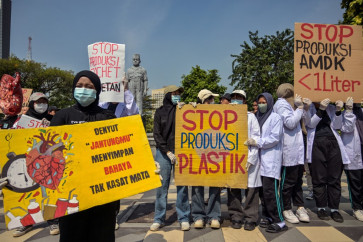Popular Reads
Top Results
Can't find what you're looking for?
View all search resultsPopular Reads
Top Results
Can't find what you're looking for?
View all search resultsMicroplastics detected in air across 18 major cities in Indonesia: Study
Sofi Azilan Aini, ECOTON’s microplastic research volunteer coordinator, said the main source of airborne microplastics is the widespread burning of plastic waste, which accounts for 57 percent of contamination.
Change text size
Gift Premium Articles
to Anyone
 Activists from the Ecological Observation and Wetlands Conservation (ECOTON) and students hold posters reading “Stop the production of plastic packaging“ during a protest near an installation in the shape of a heart and lungs damaged by exposure to microplastics waste to raise awareness of the impact of single-use plastics on the environment and human health in Surabaya, East Java on July 16, 2025. (AFP/Juni Kriswanto)
Activists from the Ecological Observation and Wetlands Conservation (ECOTON) and students hold posters reading “Stop the production of plastic packaging“ during a protest near an installation in the shape of a heart and lungs damaged by exposure to microplastics waste to raise awareness of the impact of single-use plastics on the environment and human health in Surabaya, East Java on July 16, 2025. (AFP/Juni Kriswanto)
N
ew research has found that the air in several major Indonesian cities is contaminated with microplastics, posing threats to public health and the environment.
The study, conducted by the Ecological Observation and Wetlands Conservation Foundation (ECOTON) in collaboration with the Society of Indonesian Environmental Journalists (SIEJ) between May and July 2025, examined air quality in 18 cities across the country.
The research employed passive air deposition monitoring, placing glass petri dishes at a height of 1-1.5 meters which corresponds to the human breathing zone at representative locations in each city to collect airborne particles. The samples were then subsequently analyzed under a microscope to identify the types of microplastics present.
The research found that all cities surveyed were contaminated with microplastics to varying degrees.
Central Jakarta and South Jakarta recorded the highest concentrations, with 37 and 30 microplastic particles collected from every 9-square-centimeter petri dish during the two-hour sampling period, respectively.
They were followed by Bandung in West Java (16 particles), Semarang in Central Java (13), Kupang in East Nusa Tenggara (13), Denpasar in Bali (12) and Surabaya in East Java (12).
Analysis of the samples showed that most microplastics were small fragments (53 percent) and fibers (46 percent), with a very small amount present as thin films (0.6 percent).


















